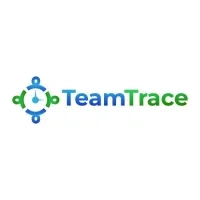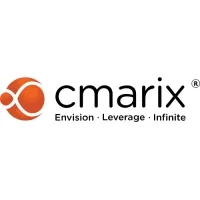Scope creep is a persistent challenge in project management, particularly in IT projects like software development. It happens when the project’s scope shifts mid-course, often due to changing requirements or stakeholder demands, leading to delays and budget overruns.
Originally, projects are defined by a set of deliverables with a fixed deadline, but as the scope expands, the timeline stretches, and resources are stretched thin. In fact, a survey of 60 project managers revealed that 92% of project failures were linked to poor scope creep management.
So, how can we tackle this issue? Well, to overcome scope creep, it’s crucial to understand its root causes and implement effective strategies to keep projects on track and within scope. Let’s dive deeper into what scope creep exactly is, why it occurs and how to prevent it from derailing your project.
What is Scope Creep?
Scope creep refers to the gradual expansion of a project’s scope, often due to changing requirements or additional demands from stakeholders after the project has already begun.
As you can interpret, this shift often leads to missed deadlines, increased costs, and resource strain, ultimately jeopardizing the success of the project.
Reasons Behind the Failure of IT Projects
Several factors may attribute to the failure of IT projects, including:
Beyond financial losses, the fallout from a failed IT project is significant. Companies face wasted person-hours, missed deadlines, and stalled innovation.
In many cases, organizations are confronted with the need to hire and train new staff to fix the issues, leading to even more lost revenue. Simply put, the failure of an IT project can have a ripple effect that stretches far beyond the initial setback.
What are the Types of Scope Creep?
Scope creep can derail a project and understanding its two main types- business creep and technology creep, can help you prevent it from happening.
1. Business Creep
Business creep occurs when project objectives aren’t clearly defined or when stakeholders are unclear about their needs. This often happens due to poor planning, vague requirements, or indecision from clients, especially when they only realize their true needs halfway through the project.
Solution:
2. Technology Creep
Technology creep occurs when teams add unnecessary features or "gold-plate" the project to exceed client expectations. This often stems from lack of clarity in project requirements or reacting to unforeseen issues without approval.
Solution:
Shocking Project Management Statistics- At a Glance
A study by Williams et al. found that 54% of project failures are due to project management issues, while only 3% are caused by technical problems.
According to the Standish Group’s CHAOS Summary 2009:
These stats highlight the critical role of effective project management in ensuring project success.
Real-World Examples of Scope Creep
Two major projects- Denver International Airport's automated baggage system and Boston's Big Dig were derailed by massive scope creep, leading to significant delays and budget overruns.
DIA Automated Baggage-handling System
In the 1990s, DIA aimed to create an innovative automated baggage system, but scope creep pushed the completion 16 months beyond schedule, with a $569 million budget overrun. The project was eventually abandoned in favor of a manual system. Key issues included:
Boston’s Big Dig
The Big Dig, the largest highway project in the U.S., started in 1982 with a target completion of 1998 and an estimated cost of $2.56 billion. It wrapped up in 2007, almost nine years late, with a final cost of $14.8 billion—$12 billion over budget. Scope creep occurred due to:
Both projects highlight the severe impact of uncontrolled scope changes, making clear communication and change management critical to project success.
Causes of Scope Creep: Key Factors to Watch Out For
Scope creep can adversely impact a project if not managed properly. Here are the top causes to be mindful of:
-
Poor Team Communication
Clear communication among clients, stakeholders, and project teams is crucial. Project managers must keep everyone in the loop, ensuring stakeholders don’t bypass formal procedures and pitch changes directly to the team.
-
Excessive Stakeholder Involvement
When too many stakeholders get involved in decision-making, conflicting opinions and constant change requests can lead to scope creep. Having a clear decision-maker and a defined approval process helps prevent this.
-
Late User Feedback
Involving end-users early on and gathering their feedback regularly helps catch potential issues before they become costly. Delaying feedback can result in major errors that are hard to fix later in the project.
-
Lack of a Change Control Process
A formal change control process is essential to manage scope modifications. It sets clear guidelines for how changes are requested, approved, and executed, keeping scope creep in check.
-
Unrestrained Client Change Requests
Clients often request changes to maximize their investment. However, entertaining an endless list of requests can lead to delays and compromise quality. Setting clear boundaries and having a structured change management process is key to managing these requests effectively.
Consequences of Scope Creep in Project Management
Scope creep can have severe impacts on a project’s success. These may include:
-
Cost Overruns
Expanding the scope without adjusting the budget can lead to unplanned expenses, resulting in significant cost overruns.
-
Project Delays
Additional requirements or changes can push deadlines back, especially when extra tasks weren’t factored into the original schedule.
-
Poor Quality
Rushed work to meet deadlines often results in mistakes, errors, or incomplete deliverables when the scope expands without enough time or resources.
-
Resource Strain
Extra work demands more time, tools, and personnel, putting pressure on resources and causing inefficiencies or burnout.
-
Stakeholder Dissatisfaction
Scope creep may result in misunderstandings between stakeholders if the project deviates from its original goal. Clients or sponsors may be dissatisfied if the project failed to meet their expectations, or if it exceeds the set budget and time.
-
Compromised Closure
When scope creep takes hold, projects may never truly be finished, as constant changes make it difficult to finalize and assess project success.
Scope Change vs. Scope Creep: What Makes One Different from the Other?
| Parameter |
Scope Change |
Scope Creep |
| Definition |
A formal, approved modification to the initially set project scope |
Uncontrolled, sudden, and often unauthorized stretching of the project scope |
| Nature |
Fully planned and intentional change |
Unprecedented and often accidental |
| Approval |
A formal approval is required via a thorough change control process |
Usually occurs without a formal approval |
| Control |
Managed and duly controlled via proper documentation and process |
Lacks sufficient control or supervision of the changes requested |
| Impact on Project |
Changes are anticipated and well-accounted for (for example, schedule, budget adjustments, etc.) |
Can lead to delays, project overruns, and resource strain |
| Core Cause |
Fresh requirements & unforeseen challenges with respect to the ever-changing business needs |
Lack of scope boundaries, miscommunication, or failure to control scope changes |
| Mitigation |
Managed deftly via change requests, impact analysis, and updated plans |
Often difficult to manage once scope creep sets in |
| Example |
Adding a new feature after formal approval and adjusting the project timeline and cost accordingly |
Frequent requests for changes that keep accumulating without prior approval |
Real-life Examples of Scope Creep in Project Management
Scope creep is a frequent issue in project management, especially in IT projects where clients often view changes as “minor” but these adjustments can greatly impact timelines, budgets, and project structure. Here are some everyday examples of scope creep that project managers often face:
-
Client Disagreement Over "Minor" Changes
Clients frequently request changes they consider "minor," but even small tweaks to design or functionality can require significant adjustments in code, testing, and system architecture. These incremental changes, while small in isolation, can lead to major disruptions, often with clients unwilling to expand budgets to accommodate the added complexity.
-
Timeline Extensions Due to Scope Changes
As the project scope expands, deadlines become harder to meet. New features or changes add complexity, but clients often resist agreeing to a revised timeline. This mismatch between the original timeline and the expanded scope can result in resource misallocation and missed opportunities.
-
Impact on Project Architecture
Adding or changing features can require a major redesign of the project's architecture, especially if new integrations or components are introduced. This ripple effect requires adjustments across the system, further increasing costs, time, and complexity, leading to tough negotiations with clients about budgets and timelines.
-
Forceful Implementation of New Features
Introducing new features often increases the occurrence of bugs, which then requires more extensive testing. Regression testing, in particular, becomes challenging as new features interact with existing ones, consuming additional time and resources. This testing expansion delays the project and strains the team.
-
Regression Issues in Coding
New features can interfere with the existing code, causing regression issues that break or disrupt previously working components. This leads to additional debugging and troubleshooting, extending the development timeline and increasing the risk of new errors, which raises both costs and resource demands.
How TeamTrace Helps Prevent Scope Creep in Project Management?
Scope creep is a common issue in project management, often triggered by unexpected requests for new features or changes that weren't initially part of the plan. Whether it's adding a rating system to a basic project or making other modifications, these changes can quickly derail timelines and budgets.
TeamTrace offers a suite of tools that help project managers prevent scope creep and keep projects on track. Let’s see how:
-
Visualizing Project Scope with Gantt Charts
TeamTrace’s Gantt chart allows project managers to visually track tasks, milestones, and deadlines. By mapping out the initial scope clearly (e.g., registration, log in, search functionality), teams can easily monitor progress and ensure that changes don’t sneak in without proper oversight.
-
Clear Scope Definition with Wiki
The Wiki feature helps document the entire project scope upfront, ensuring that both the project team and clients have a clear understanding of what’s included. This shared reference point helps avoid scope misunderstandings as the project evolves.
-
Locking the Scope with Collaboration Tools
When clients suggest changes or new features, TeamTrace’s collaboration tools allow the project manager to lock the scope and keep the client informed. Clients can leave comments and feedback directly within the platform, helping them understand the implications of any scope changes and preventing unapproved additions.
-
Clear Communication with Clients
TeamTrace makes it easy for project teams to share links to the Scope of Work (SOW) document with clients. This ensures everyone is aligned on the agreed scope. When scope changes are requested, project managers can clearly communicate how the new requirements will impact the timeline and budget.
-
Multi-Hierarchy Features for Better Organization
With TeamTrace, project managers can break the project down into multiple hierarchies, keeping things organized. If new features are added (like a rating system), they can be tracked as child tasks under the main feature, preventing scope disruptions.
Are All Changes in Scope Bad?
Not all changes in project scope are detrimental. As Jesse Stockall, Chief Architect at Flexera, puts it, “Scope creep isn’t inherently bad”- it can actually lead to a deeper understanding of the problem domain and increased stakeholder involvement. When managed well, scope changes can be sliced into manageable increments that can be delivered iteratively. This allows teams to get valuable feedback from users quickly, helping to validate and prioritize new items.
While scope changes can threaten a project's success, it's important to identify and incorporate the good changes early on in the planning phase. With the right approach and tools, such as TeamTrace, managing scope creep becomes much easier. By regularly tracking progress and staying aligned with the project's ultimate goals, project managers can keep scope changes under control and ensure successful outcomes.
In essence, managing scope changes efficiently, especially with the support of comprehensive project management software, ensures that the project’s trajectory remains focused and on target.
















